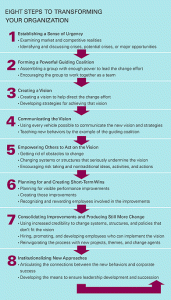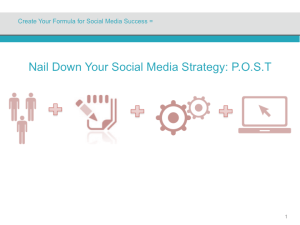In a recent content marketing report, 93 percent of B2B marketers say they are using content marketing this year in their efforts. The plethora of online content is astounding on the topic; more than 1 billion search results appear.
That’s right 1 billion results.
But, among the 1 billion search results, I haven’t found much in marketers sharing the growing pains. While content marketing might be the shiny new penny, there are seven ugly truths about content marketing.
Ugly Truth #1: Everyone wants to create content, but no one wants to discuss promotion and distribution
Perhaps you have been in meetings where content creators focus most of their time on creating, and no time on distribution and promotion. In today’s crowded digital world, assigning no distribution or promotion plan is a fool proof way to make sure your content will not be viewed. The old model of “one and done” is over.
I had an amazing, but stunning conversation recently with one of my internal clients that illustrate the lack of understanding promotion. I shared that I was looking to budget some marketing dollars to paid and native advertising, among other things. His response, “why would we do that? We could use that money for a conference.”
Disheartening, yes. However, I had a clever response. “While the conference might be worth wild, you may only reach maybe 50-75 people at one time for an hour. Online, I can reach 5X to 10X more people, twenty-four hours a day. While you are sleeping, your content can be seen in other parts of the world that far exceed the face-to-face conference.”
Paid search and native advertising (sponsored content) gets the shaft because simply your executives and experts don’t realize they have used it in their off time. More importantly they don’t understand the language or what it means.
Ugly Truth #2: Many folks in your organization already create content without a strategy
Fun fact: 70 percent of marketers say they lack a consistent or integrated content strategy, despite the fact that 82 percent of content marketers see positive ROI for their inbound marketing.
One of the most interesting parts of my role is wrangling all content creators together so we can “pull on the same string.” There are multiple people in your organization creating content: HR for internal campaigns, product management to communicate with clients, marketing to connect with prospects. Unifying your strategy is important not only for content marketing sake, but also for all the areas your content will be distributed: website, campaigns, annual conferences, social media, and public relations effort.
A unified strategy helps define what your creators will produce, what your team will market and distribute, and what success will look like. While much has been written on content strategy, only 44 percent have a documented strategy according to Content Marketing Institute.
Solution: Write down your content approach and then socialize that among your internal stakeholders. This does not have to be a fancy document. Kristina Halvorson, author of Content Strategy for the Web, describes content strategy as “planning for the creation, delivery, and governance of useful, usable content.” I like this definition and used it as a template for my company. My documented strategy: what we plan to create that is signed off by the businesses and more importantly subject matter experts, when it is to be delivered, how we plan to use it and repurpose, and what channels will it be distributed. Success metrics are defined by the team and reported on a monthly basis.
Ugly Truth #3: Many folks create content they want to publish not what the customer needs
In my opinion this is the ugliest truth of all. In my former PR role, I had the luxury of driving what content was created because my stakeholders (editors and reporters) drove what content they want. Why? They knew what the reader wanted or what is most interesting to them.
As a content marketer working with highly specialized experts, I run into what a call “academic professor syndrome.” Remember when you were in college and the professor would pontificate on subjects outside what you were interested in? This syndrome of sharing information only the professor is interested in rather than you reappears in marketing, especially marketing consultants’ expertise.
Solution: Unlike college, where I had to listen, I don’t have to take everything the subject expert as truth. I can validate it by research. I research the following to guide this conversation:
- I review the number of Google searches it appears in. Also, I check out Google Trends to see if this is trending.
- I do some research in trades and national news to see how many others are discussing
- I perform a small number of searches on social media: Linkedin and Twitter ( these platforms, for my company, are the most used in my areas of focus)
- I see what others are writing about on the contra of that idea
With this information in hand, I am much more equipped to discuss with the expert effectively. Otherwise this conversation will escalate. Trust me. If the topic is not discussed, I pose the question whether it is an emerging trend or just something the expert thinks is “cool.” What your expert think is “cool” maybe better position for something else (blog post on personal site?), but not much else that takes more resources and time to write. Your job to mitigate project creep and stick to the plan.
Ultimately, this is about creating and executing a plan. Without it, your content marketing efforts will be sunk.
What else would you add?
Rachel DiCaro Metscher has worked with many organizations to build their communications and marketing programs, including Fannie Mae, American Psychological Association, and The Princeton Review. She is currently working in the DC metro area building content marketing programs from the ground up.




